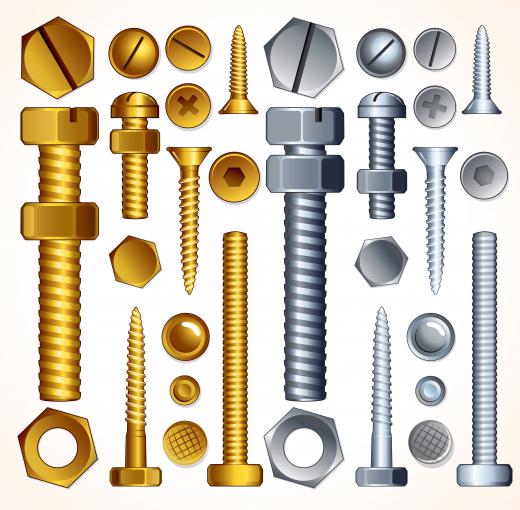Socket cap screws have a hexagonal recess in the center of the screw head to accept a hex wrench. The hexagonal recess coupled with a hex wrench increases the bite between the socket head screw and the tool. This results in less head damage than standard Phillips or slotted head screws. Like other head types, socket cap screws come in a variety of head and material types for a wide variety of applications. Matching the socket screw head type with the required installation ensures that the finished connection is structurally sound.
Low-profile socket cap screws allow the biting strength of a hex wrench with a reduced height. A lower head height allows this type of socket head screw to be installed in areas with less room but still require a high-torque connection. One benefit of a low-profile socket cap screw is the low height of a hex wrench compared to a screwdriver or ratchet wrench and socket. The shorter arm of a hex wrench allows it to reach into tight areas to release tight screws, and the long arm of the wrench fits into slim spots not easily reached by a socket attached to a ratchet handle.

High-profile socket cap screw heads provide mass on top of a connection, increasing the amount of stress that a screwed connection can handle before shearing. This type of socket head screw fits well on thicker materials or connections subjected to high stress. Coupled with a lock washer or lock nut, the taller height reduces movement in connections subjected to vibration. This is a common screw found on industrial equipment and connections in high-pressure hydraulic systems. A socket cap screw made of stainless steel increases the tensile strength of a connection and increases its resistance to corrosion in moist environments.

Moisture causes carbon steels to weaken because of rust forming and eating away at the material. The element chromium contained in a stainless socket cap screw allows the surface of the screw to form a self-replicating passive coating that is resistant to rust and other types of atmospheric corrosion. When an installed socket cap screw receives damage, the passive coating replenishes itself when oxygen in the atmosphere contacts the exposed section of the screw. Whether a socket cap screw is made up of stainless steel or carbon steel, any connection will benefit from the increased durability of the hexagonal recess and wide variety of head styles of socket cap screws.
